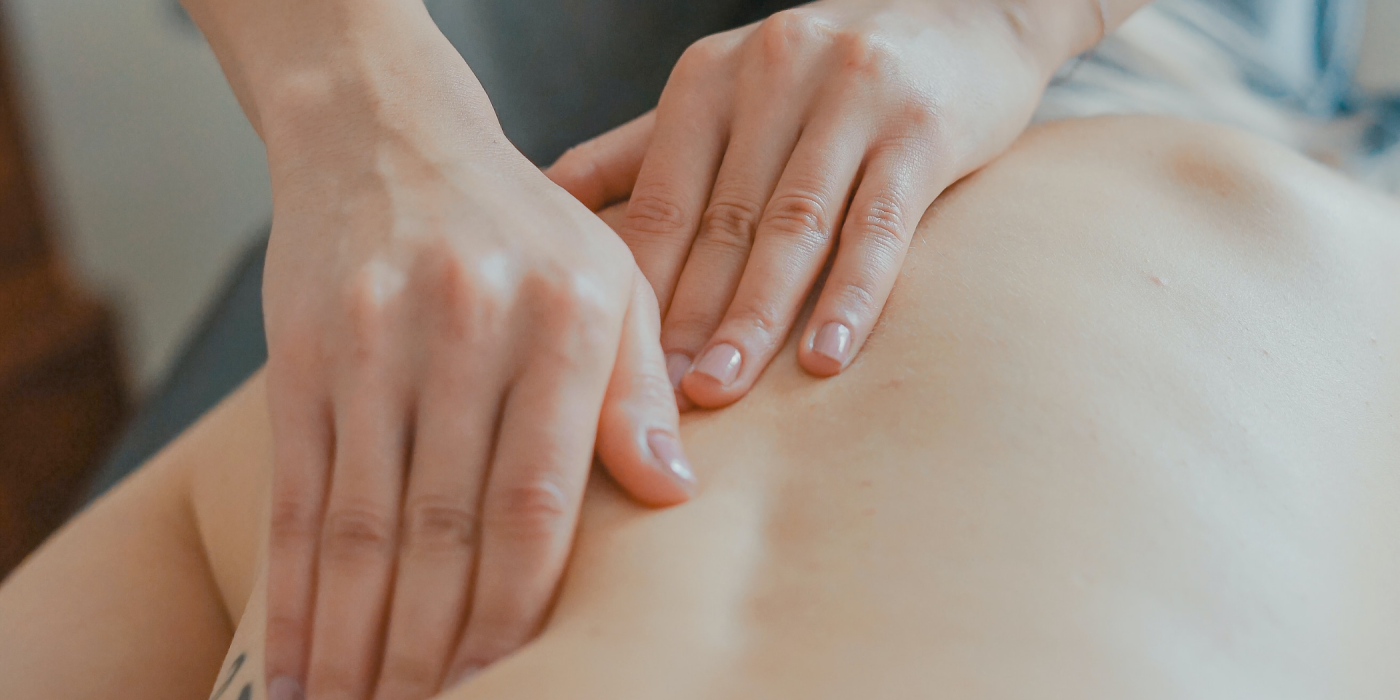Craniosacral Therapy: Unleashing the Healing Potential of Gentle Manipulations

Introduction to Craniosacral Therapy
What is Craniosacral Therapy?
Craniosacral Therapy is a gentle, non-invasive form of bodywork that aims to enhance the body's natural healing capabilities. Originating from osteopathy, it focuses on the craniosacral system, which includes the bones, nerves, fluids, and connective tissues of the cranium and spinal area.
Focus on the Central Nervous System
In essence, this therapy zeroes in on the central nervous system - the brain and spinal cord - aiming to restore and maintain balance. The therapist achieves this through soft-touch manipulations, around the skull and sacrum (the base of the spine), to correct any imbalances in the rhythm of the cerebrospinal fluid that surrounds and protects these areas.
The Craniosacral Rhythm
These rhythmic pulses, known as the craniosacral rhythm, reflect the pressure changes in the cerebrospinal fluid. Any disruption to this rhythm can potentially impact numerous bodily functions, leading to discomfort or disease.
A Sneak Peek into its Benefits and Applications
To whet your curiosity, Craniosacral Therapy offers a plethora of benefits. Ranging from stress reduction to pain relief, its applications extend far beyond just physical healing. It is also said to enhance relaxation, emotional stability, and overall well-being. Intriguing, isn't it? Stay tuned to explore more about this extraordinary therapy.
Historical Context
Origins of Craniosacral Therapy
The foundation of Craniosacral Therapy can be traced back to the early 20th century, with the pioneering work of William Sutherland, an osteopath. He theorised that the bones in the skull were designed to accommodate minute movements — a concept contrary to the prevailing belief that skull bones were fused and immobile. Sutherland's idea led to the development of 'cranial osteopathy', which is the precursor of today's Craniosacral Therapy.
Development and Spread in the UK
It wasn't until the 1970s when Dr. John Upledger, an American osteopath, took Sutherland's work a step further by refining the therapy and coined the term "Craniosacral Therapy". The therapy gradually gained recognition in the UK during the 1980s. Its popularity rose due to its non-invasive nature and the growing public interest in holistic and complementary therapies. Over the years, it has been widely taught in various health and wellness institutions across the UK, leading to a steady rise in qualified practitioners.
Current Standing in the Field of Alternative Medicine
In the contemporary field of alternative medicine, Craniosacral Therapy holds a unique position. Though it's not universally recognised by conventional medicine, its value is increasingly being appreciated for its potential benefits in stress reduction, pain management, and overall well-being. Its gentle, non-invasive approach appeals to many individuals who seek complementary treatments to traditional medical procedures. As more research is conducted and anecdotal evidence accumulates, the acceptance and utilisation of Craniosacral Therapy are set to grow.
Understanding Craniosacral Therapy
The Craniosacral System
The Craniosacral System comprises various components including the skull, spinal cord, cerebrospinal fluid, and the system of membranes encasing the brain and spinal cord. This interconnected system plays a significant role in maintaining the body's physiological balance.
Skull and Spine
The skull, known as the cranium, and the spine form the skeletal part of the system, protecting the delicate tissues within.
Cerebrospinal Fluid and Membranes
Cerebrospinal fluid, produced in the brain, flows around the brain and spinal cord, cushioning these vital parts. The membranes, known as meninges, act as an additional protective layer.
The Technique
Craniosacral Therapy revolves around gentle manipulations. The therapist applies light touch – typically no more than the weight of a nickel – to assess and enhance the craniosacral system. This hands-on approach aims to detect potential restrictions and imbalances in the flow of the cerebrospinal fluid.
The Underlying Philosophy
At the heart of Craniosacral Therapy is the philosophy of harmonising the rhythm of the central nervous system. The therapy works on the premise that by remedying the imbalances in this system, the body's innate healing capabilities can be stimulated, leading to improved overall health and wellbeing. This approach views health as a harmonious interplay of rhythms and strives to restore this balance.
The Procedure of Craniosacral Therapy
Preparation for a Session
Prior to a Craniosacral Therapy session, it's important to wear comfortable, loose clothing as this facilitates ease of movement. Ensure to hydrate well and arrive with an open mind, ready to relax and tap into your body’s natural healing rhythm.
A Typical Session Walkthrough
A Craniosacral Therapy session generally begins with the client lying down on a massage table, fully clothed. The therapist will lightly place their hands on different parts of the body, primarily focusing on the head, spine, and sacrum. This is to tune into your Craniosacral rhythm.
The Therapist's Touch
The touch used in Craniosacral Therapy is gentle, often described as no heavier than a nickel. The therapist will use these light touches to identify areas of tension or blockages and aim to restore balance, facilitating the free flow of cerebrospinal fluid.
The Role of the Therapist
The therapist’s role extends beyond just physical touch. They create a safe, calming environment, fostering trust and relaxation. Through their expertise, they sensitively read the Craniosacral rhythm and respond accordingly with targeted manipulations.
Post-Session Experience
After the session, you might experience a range of feelings. Some people report feeling deeply relaxed or sleepy, while others may feel energised. Temporary mild discomfort or emotional release can also occur as the body adjusts to the changes in the Craniosacral system. Each person’s experience is unique, and your therapist will discuss any personal queries or concerns during your session.
The Profound Benefits of Craniosacral Therapy
A Comprehensive Review of Studies
Several scientific studies underscore the efficacy of Craniosacral Therapy (CST). A 2012 study published in the Journal of Alternative and Complementary Medicine revealed significant improvements in quality of life and a reduction in neck pain intensity in patients undergoing CST. Another piece of research from 2019 in the Clinical Rehabilitation journal reported that CST has proven helpful in relieving chronic neck pain while improving physical function and general health perception.
Delving Deeper into the Benefits
The benefits of CST extend far beyond simple pain relief. The therapy aids in stress reduction by calming the nervous system, enabling the body's innate healing processes. With its gentle touch, CST is known to alleviate migraines and headaches, reduce chronic back pain, and improve conditions like fibromyalgia and temporomandibular joint disorder.
Stress Reduction
The gentle rhythmic manipulations in CST have a profound calming effect on the central nervous system, contributing to significant stress reduction and promoting overall well-being.
Pain Relief
CST is frequently used for pain management, offering a non-invasive approach to chronic conditions like migraines, back pain, and neck pain.
Personal Stories and Testimonials
Anecdotal evidence further supports the effectiveness of CST. Many individuals recount experiencing immediate relief from pain and heightened feelings of relaxation post-treatment. These testimonials often reflect a renewed sense of energy and a greater level of comfort in their everyday lives, illustrating the transformative potential of Craniosacral Therapy.
Possible Concerns and Contraindications
Safety of the Procedure
Craniosacral Therapy is generally considered a safe treatment modality, primarily due to its non-invasive nature. It involves light touch and gentle manipulations of the skull and spine, which are typically well-tolerated by most individuals. It's worth noting, however, that the therapy should always be administered by a certified and trained professional to ensure correct practice.
Ensuring Safe Practice
To ensure safety, always choose a therapist registered with a recognised UK organisation, such as the Craniosacral Therapy Association of the UK (CSTA). It's important to discuss your medical history and any existing health conditions with your therapist before proceeding with the treatment.
Potential Side Effects
The majority of individuals experience no significant negative side effects from Craniosacral Therapy. Some people may experience temporary light-headedness, increased emotional sensitivity, or a sense of deep relaxation following a session. These effects are generally transient and resolve on their own.
What to Expect Post-Session
While such reactions are generally rare and benign, it's advisable to allow yourself some time to rest and acclimate after a session, especially if it's your first time receiving the therapy.
Conditions or Circumstances where the Therapy May not be Recommended
While Craniosacral Therapy is deemed safe for many, there are specific conditions where it might not be advised. For instance, individuals with conditions affecting the central nervous system, such as acute aneurysm, cerebral haemorrhage, or other severe medical conditions, should consult their primary healthcare provider before undertaking this therapy.
Precautionary Measures
Craniosacral Therapy is a complementary approach, and it should not replace conventional treatments for serious health conditions. Always consult with your healthcare provider to ensure that it's an appropriate addition to your healthcare regimen.
Finding a Craniosacral Therapist
Qualifications to Look for in a Therapist
When selecting a Craniosacral Therapist, it's crucial to look for specific qualifications. The practitioner should have undergone a comprehensive training programme from a recognised institution. They should have a thorough understanding of the anatomy and physiology of the craniosacral system and should have mastered the specific techniques of the therapy.
Recognised Institutions
Certification from organisations such as the Craniosacral Therapy Association (CSTA) or the Upledger Institute are considered reliable indicators of a well-trained therapist.
Reliable Resources to Find Certified Practitioners
In order to find a certified practitioner, a great place to start is the CSTA’s official website. They maintain a searchable directory of qualified therapists throughout the UK. You can also explore websites like Therapy Directory and Natural Therapy Pages for additional options.
Online Directories
Remember that whilst these directories can be a good starting point, it’s important to do your own research, read reviews, and consider getting a personal recommendation if possible.
Expected Costs for a Session
The cost of a Craniosacral Therapy session can vary depending on the location and the practitioner's experience. However, in the UK, you can generally expect to pay between £40 to £80 per session. It's important to discuss the cost with your therapist before commencing the therapy.
Insurance Coverage
Check with your insurance provider as some health insurance plans may cover part or all of the cost for this therapy. Always confirm this information in advance to avoid any surprises.
Conclusion: Embracing the Power of Craniosacral Therapy
Recapitulating Craniosacral Therapy
Craniosacral Therapy, with its focus on the central nervous system through gentle manipulations, plays a crucial role in promoting overall health and wellness. It leverages the body's natural rhythm and healing capabilities to alleviate stress, offer pain relief, and improve numerous physical and mental health conditions. In essence, it taps into the holistic nature of human health, embracing the intricate connection between mind, body, and spirit.
Future Implications
Looking ahead, the potential of Craniosacral Therapy to contribute to wellness cannot be underestimated. With more research in the pipeline and an increasing acceptance of alternative therapies, it is poised to gain more recognition and efficacy in the wider medical community.
Encouragement to Explore
Given its myriad benefits and non-invasive nature, we encourage you, our readers, to consider Craniosacral Therapy as a complementary approach to your current health routine. Its focus on holistic health could provide the balance many traditional treatments might miss.
Selecting the Right Therapist
However, do remember the importance of selecting a certified and experienced Craniosacral Therapist. The right practitioner will not only ensure safety but also maximise the benefits of the therapy.
Reflections and Moving Forward
As we venture further into the 21st century, the integration of alternative therapies like Craniosacral Therapy into mainstream healthcare signals a more holistic, patient-centred approach to wellness. It's an exciting future, one where our understanding of health transcends physical symptoms and embraces the inherent harmony of the human body.
Related to this article are the following:
- The Magic of Chair Massage: Unwinding in the Modern World
- Unlock Your Athletic Potential: The Power of Sports Massage for Performance and Recovery
- Aromatherapy Massage: The Journey to a Sensory Nirvana
- Experience the Warmth: Uncovering the Benefits and Techniques of Hot Stone Massage
- Experience the Multifaceted Benefits of Swedish Massage
I do hope you have enjoyed this article and hope that you will subscribe to my newsletter so you can get the latest information about all things naturally relaxing.
Stay in touch, join the Naturally Relaxing Newsletter
Newsletter Signup
Post Your Comments
or post as a guest
Be the first to comment.
Latest articles in Relaxation

Capturing the Perfect Sunset: Tips and Techniques

The Benefits of Aromatherapy: Essential Oils for Relaxation

Embracing Calm: Innovative Ways to Relax in the New Year

Autumn Aromatherapy: Essential Oils for Relaxation

Embracing Autumn's Tranquillity: Finding Peace in the UK's Golden Season






